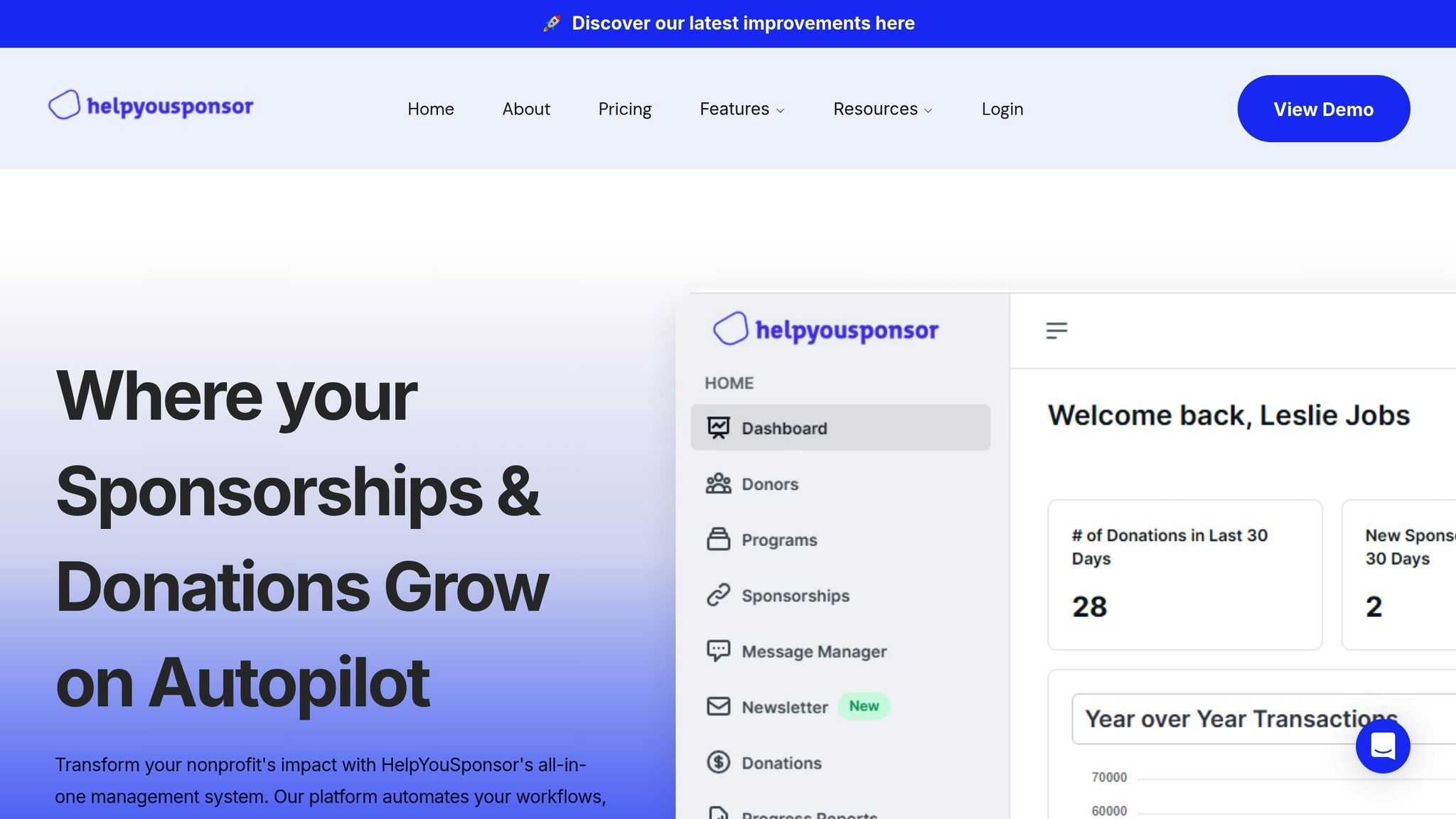Guide to Cultural Competence in Child Protection
Enhancing cultural competence in child protection services is vital for effectively supporting diverse families and improving outcomes.

Want to improve how child protection services connect with diverse families? This guide breaks down key principles and strategies for nonprofits to work effectively with families from different backgrounds.
Here’s what you’ll learn:
- What it means to be culturally competent: Recognize your own biases, understand diverse traditions, and build skills to work across cultural lines.
- Why it matters: 1 in 5 U.S. children has immigrant ties, but disparities in foster care outcomes persist.
- How to apply it: From staff training to policy changes and community partnerships, actionable steps are outlined to improve services.
What Does Cultural Competence Mean In Child Welfare? - Child Welfare Network
Core Principles of Cultural Competence
Building on our earlier discussion, these principles help turn ideas into action, ensuring child protection efforts are effective and inclusive. Nonprofits must embrace these principles to work successfully with diverse families. They form the bedrock for respectful, meaningful interactions that honor the unique strengths and needs of every community.
Self-Awareness and Respect for Diversity
Cultural competence starts with looking inward. Self-awareness means understanding your own cultural values, beliefs, and biases - and recognizing how they may differ from those of the families you serve. This kind of reflection ensures that services are delivered fairly, without personal assumptions clouding decisions.
Respecting diversity isn’t just about tolerance. It’s about actively appreciating and valuing differences within and across cultures. When organizations truly embrace diversity, they create environments where families feel safe sharing their experiences and perspectives.
Data supports the value of diversity: organizations in the top quartile for diversity see a 33% performance boost, yet 25% of employees still hesitate to engage across cultural differences.
Tools like cultural self-assessments help nonprofits evaluate their current practices and pinpoint areas for growth. Staff training further supports this effort by reducing biases and fostering qualities like empathy, patience, and open-mindedness.
Effective communication is another cornerstone of respect. This includes understanding nonverbal cues, using inclusive language, respecting personal names, and adapting communication styles to suit each situation. Organizations should also provide bilingual translators when necessary.
These steps help create a foundation for stronger connections with families and communities.
Family and Community Involvement
True cultural competence thrives on collaboration with families and communities. Families are the experts on their own experiences, and their input should be central to decisions affecting their children.
"We need teachers who can weave back and forth between the knowledges of various cultures so that students have mirrors that reflect their cultural backgrounds and windows into other cultural experiences."
- Albert Marshall, Indigenous elder in Canada
Cultural traditions provide families with resilience and a sense of identity. Strong connections to these traditions can help buffer against the effects of trauma [2]. By supporting these ties, nonprofits can strengthen families' sense of belonging and enhance social support networks, which ultimately benefit children.
Partnerships with communities are essential for bridging cultural divides. For example, in Catawba County, North Carolina, the United Hmong Association trains social services staff on Hmong history and culture, improving their ability to work with Hmong families. Similarly, in Seattle, Asian Counseling and Referral Services (ACRS) provides bilingual, bicultural clinicians to better serve their clients.
Engaging families effectively requires open, ongoing communication. This means using translation tools, avoiding scheduling conflicts with cultural or religious holidays, and providing multiple opportunities for families to share their input throughout the year.
These partnerships naturally lead to a deeper, ongoing commitment to cultural competence.
Commitment to Continuous Learning
Cultural competence isn’t static - it evolves as communities change and understanding grows. Nonprofits must stay committed to adapting and learning over time.
"Cultural Responsiveness states the expectation that workers demonstrate knowledge of and sensitivity to the dynamics of diversity, respecting and learning from the unique characteristics and strengths of families and tribes, and applying these concepts and skills to enhance individual and family functioning."
This commitment involves staying informed about the values, histories, languages, and worldviews of the families being served. It also requires understanding that some communities may prefer alternative approaches to child welfare, such as customary adoption or legal guardianship transfers instead of terminating parental rights.
Continuous learning also means recognizing systemic biases that affect child welfare outcomes. Staff must understand how racial disproportionality impacts the system and familiarize themselves with programs designed to address these disparities.
To support this ongoing learning, organizations can build networks with community experts, cultural groups, and natural helpers who provide valuable insights. Regular professional development sessions, cultural forums, and open dialogues keep staff engaged with evolving practices and community needs.
The most effective nonprofits weave cultural learning into every part of their operations. This includes hiring practices that prioritize diversity, creating program materials that reflect the communities they serve, and offering families opportunities to provide feedback throughout the year. These strategies are essential for protecting children across all cultural contexts.
Practical Strategies for Building Cultural Competence
Taking practical steps to enhance cultural competence directly improves outcomes in child protection by fostering approaches that are more responsive to the needs of diverse communities. Turning principles into action requires deliberate efforts to reshape organizational practices. These strategies can help nonprofits make a real difference in how they engage with and support families from various cultural backgrounds.
Staff Training and Education
Digital tools like Phew LMS are transforming how organizations approach cultural competence training. For example, Somerset Safeguarding Children Partnership adopted the platform in January 2025, while Oxfordshire Safeguarding Children Board saw a 50% increase in attendance for its training sessions. Effective training programs should address topics like cross-cultural parenting, immigration issues, and language barriers. To ensure these lessons stick, organizations should supplement training with regular refreshers, peer learning sessions, and opportunities for direct community engagement.
A standout example is the Coalition for Asian American Children and Families (CACF) in New York. Between 2003 and 2006, they trained child welfare staff and community organizations to work more effectively with immigrant families, focusing on immigration challenges and leveraging informal service networks.
One-off workshops often fall short. Continuous education - through refresher courses, peer discussions, and case consultations - helps staff apply cultural competence skills in real-world scenarios. Additionally, engaging directly with community members provides valuable insights that go beyond theoretical knowledge.
Training alone, however, isn’t enough. Inclusive policies are key to embedding these skills across all organizational practices.
Policy Development That Includes All Groups
Policies are most effective when they reflect the voices of the communities they impact. Without input from those directly affected, policies often fail to address critical nuances.
"Policies end up missing the mark on who they impact, how they impact, and what they're designed to do when you don't have voices in the conversation who understand all the small nuances of the problem or issue." - Isabel Coronado, Next100 alumna policy entrepreneur
To avoid this, organizations should involve stakeholders - employees, volunteers, community members, and families - at every stage of policy development. Tools like surveys, focus groups, community meetings, and one-on-one conversations can help gather diverse perspectives and ensure policies are well-informed.
Accessibility is another critical factor. Policies should be available in multiple languages, and organizations should collaborate with accessibility experts to ensure materials are understandable and usable for all community members.
Diversity in leadership also plays a crucial role. Decision-making bodies should include individuals from varied cultural backgrounds to ensure that policies reflect the needs of the communities they serve. Regular policy reviews, like those conducted by Santa Clara County's Department of Family and Children's Services with their Immigration and Naturalization Resource and Practice Guide, help organizations stay aligned with evolving community needs.
Working with Community Organizations
Building partnerships with community organizations is a powerful way to extend cultural competence beyond internal efforts. Collaborating with ethnic and community-based groups provides access to cultural expertise, fosters trust with families, and strengthens referral networks, ultimately improving service delivery.
For example, partnerships between child welfare agencies and ethnic organizations have proven effective in bridging cultural and language gaps. Training collaborations are particularly valuable. In North Carolina, the United Hmong Association works with Catawba County Social Services to train staff on the history of the Hmong community in America and how to communicate effectively with Hmong families.
Service delivery partnerships also play a vital role. By working with trusted community organizations, child protection agencies can offer culturally tailored support that meets families' specific needs.
Co-designing family engagement initiatives with community organizations has shown great promise. Programs that incorporate direct family input are better equipped to address the unique challenges families face.
Youth involvement is another impactful strategy. In 2020, New Jersey's Department of Children and Families created a 24-member Youth Council within their Office of Family Voice. These cross-divisional subcommittees meet regularly, with active participation from agency leaders. As Jack Auzinger, a Youth Council member, noted:
"Really, the peer-to-peer mentoring program would not have happened if we had not said, 'Hey, there's not anybody on our side going through foster care.'"
Maintaining these partnerships requires ongoing effort and mutual respect. Open communication and reciprocal relationships are essential for sustaining collaborations and ensuring that organizations continue to learn from their community partners while adapting to changing needs.
Organizational Support and Tools
Integrating cultural competence into an organization requires a deliberate, systematic approach that touches every aspect of its operations. By embedding these principles into their framework, organizations can see tangible benefits, including enhanced trust, greater participation, and improved service outcomes within diverse communities.
Building Cultural Competence into Organizational Policies
The cornerstone of cultural competence is aligning organizational policies with inclusive values. Journey Mental Health Center (JMHC) captures this commitment perfectly:
"Cultural competence is fundamental to providing quality services that promote individual and family strengths, dignity, and self-reliance."
This philosophy should be reflected in all organizational documents - whether it’s a mission statement, strategic plan, or day-to-day procedures. Regular strategic planning sessions provide an opportunity to reassess and refine these values, ensuring they remain relevant and actionable. Policies should be adaptable, evolving alongside the needs of the populations served. Establishing a Cultural Competence Committee (CCC) that includes representatives from various levels of the organization can help keep these efforts on track, allocating the necessary attention and resources.
"Cultural competence demands an ongoing commitment to openness and learning, taking time and taking risks, sitting with uncertainty and discomfort, and not having quick solutions or easy answers."
By embracing this mindset, organizations create a solid foundation for driving meaningful change through workforce and technology initiatives.
Workforce Diversity and Resource Allocation
A culturally competent workforce doesn’t happen by chance - it requires intentional hiring practices and thoughtful resource allocation. Organizations need to treat cultural competency as a core qualification in job descriptions and recruitment efforts.
Beyond hiring, organizations should dedicate time and budget to leadership development and ongoing training in cultural awareness. Governing and advisory boards should also reflect the communities served, ensuring that decision-making processes are inclusive and representative. These efforts often lead to stronger relationships with the community, more creative problem-solving, and a deeper sense of trust and inclusion. Additionally, empowering leaders from different cultural backgrounds to share decision-making responsibilities can further enhance responsiveness and inclusivity.
Using Platforms Like HelpYouSponsor

Technology can play a critical role in supporting cultural competence initiatives. Platforms like HelpYouSponsor provide tools that help nonprofits manage programs and communicate effectively with diverse communities while also maintaining strong donor relationships.
For example, HelpYouSponsor offers donor management tools that track and analyze donor demographics. This data enables organizations to tailor their communication strategies to align with cultural backgrounds, language preferences, and geographic locations. Campaign management tools allow nonprofits to create messaging that resonates with specific cultural groups, fostering deeper connections.
The platform also includes an integrated messaging system that supports multilingual communication, ensuring that nonprofits can engage with donors and families who speak different languages. Website integration features allow organizations to showcase their cultural competence efforts, share diverse success stories, and provide materials in multiple languages. Additionally, the reporting tools help track outcomes across cultural groups, offering insights that drive continuous improvement.
For nonprofits managing child sponsorship programs, HelpYouSponsor’s tools ensure that cultural factors are considered in the matching process. The platform also facilitates communication between sponsors and families in ways that respect cultural norms and preferences. A flexible payment gateway further reduces barriers to participation, making the process more accessible for all involved.
Overcoming Challenges in Cultural Competence
Building cultural competence in child protection isn’t without its hurdles. These challenges can slow progress, but with the right strategies, organizations can move from struggling to thriving. Below, we break down some common obstacles and explore practical, evidence-backed solutions to tackle them effectively.
Common Challenges
Even with clear principles and strategies in place, real-world implementation often brings unique difficulties.
Language barriers are a significant issue. With one in five U.S. children being immigrants or children of immigrants, communication gaps can make it tough for child welfare workers to connect with families and provide effective support.
Cultural misunderstandings and biases can lead to misjudgments. For example, culturally specific parenting practices may be misinterpreted as neglect or abuse, while families unfamiliar with U.S. norms might struggle to navigate the system. Many interventions are designed with majority cultural values in mind, which can unintentionally exclude or disadvantage families from other backgrounds.
Limited resources add another layer of difficulty. Many nonprofits lack the funding for professional interpreters, culturally tailored training, or hiring staff who reflect the communities they serve.
"I think if there were more people who worked in the system who can speak the language and who understand the culture, then we could see improvement in how [child welfare workers] do things."
Resistance within organizations can also slow progress. Staff might experience “diversity fatigue” or push back against new cultural competence initiatives due to fear of change, lack of understanding, or unconscious biases.
Complex family needs further complicate the picture. Refugee and immigrant families often face unique challenges, including varied levels of acculturation, complex migration journeys, legal hurdles, and separation from loved ones. These situations require nuanced and flexible approaches, which many organizations are not fully prepared to provide.
Evidence-Based Solutions
Addressing these challenges requires targeted strategies that build on self-awareness, community engagement, and ongoing education.
Collaborative partnerships can bridge cultural gaps. By working closely with newcomer service providers, child welfare teams can better understand cross-cultural parenting practices and help families adjust to U.S. norms. For instance, joint training programs have shown success in integrating immigrant community needs into child welfare services.
Specialized training programs are essential for equipping staff with the knowledge to navigate diverse cultural contexts. These programs help workers understand different cultural histories and improve communication with families from various backgrounds.
Resource guides can provide practical support. For example, Santa Clara County, California’s Department of Family and Children’s Services created an Immigration and Naturalization Resource and Practice Guide to assist staff working with immigrant and refugee families.
Cultural competence assessment tools help organizations track their progress. These tools can be applied at both the individual and organizational levels to identify strengths and areas for improvement.
Building trust is critical for meaningful engagement. Programs like Magnolia Mother’s Trust in Jackson, Mississippi, demonstrate the power of trust. By providing Black mothers with $1,000 per month for a year, they allow participants to decide how best to use the funds. As one participant noted:
"You get constant encouragement, help with resources, a shoulder to lean on, and financial help all in one. This is a program of pure love".
Creating safe spaces ensures that everyone feels comfortable sharing their perspectives without fear of judgment or retaliation.
Comparing Cultural Competence Strategies
No single strategy is a cure-all. The most effective organizations combine multiple approaches, tailoring their efforts to their specific challenges, resources, and community needs. This layered approach not only addresses immediate obstacles but also strengthens long-term commitments to cultural competence. By integrating diverse strategies, nonprofits can lead the way in shaping policies and practices that foster inclusivity and understanding.
Key Takeaways for Nonprofit Leaders
Summary of Core Principles and Strategies
Cultural competence in child protection is a cornerstone for effectively serving diverse communities. For nonprofit leaders, embedding these principles into their organization's framework is essential.
Cultural humility involves a commitment to ongoing learning and addressing power dynamics. It means recognizing that understanding is a continuous process and actively working to balance power disparities.
Self-awareness and respect for diversity push organizations to reflect on their own cultural perspectives while embracing differences within and across cultures.
Incorporating cultural knowledge into organizational practices ensures meaningful, systemic change. This could mean integrating cultural competence into hiring policies, mission statements, and staff training budgets. Adding cultural competence as a requirement in job descriptions is another step toward making it a part of daily operations.
Building community partnerships strengthens efforts. Collaborating with refugee resettlement agencies, immigrant groups, and ethnic community-based organizations provides training opportunities and helps bridge cultural divides that single organizations might struggle to address alone.
Promoting workforce diversity is equally important. According to BoardSource's 2017 survey, 27% of organizations reported having no people of color on their board, even though 79% of executives acknowledged the importance of racial and ethnic diversity for advancing their missions. Establishing Cultural Competence Committees with representatives from various levels - policy, administration, service delivery, and the community - can create the structure needed for lasting change.
These principles lay the groundwork for a cultural shift in child protection services.
Final Thoughts on Cultural Competence
Cultural competence isn’t a one-time achievement - it’s an ongoing process. Viewing it as a journey encourages continuous improvement rather than assuming the work is ever “finished.” Beyond meeting regulatory standards, embracing cultural identities can help build resilience and provide critical support against trauma[2]. When child welfare professionals honor and understand family cultures, they can identify community resources, build on parental strengths, and help families create nurturing environments[2].
Organizations dedicated to this journey often see measurable progress. For instance, they enhance caseworkers’ understanding of cross-cultural parenting practices and help newcomer families adapt to U.S. parenting laws and norms. This approach fosters systems where families feel respected and supported, rather than judged or excluded.
Leadership commitment is key. As Cross et al. emphasized in 1989:
"Cultural competence is a set of congruent behaviors, attitudes, and policies that come together in a system, agency or among professionals and enable that system, agency or those professions to work effectively in cross-cultural situations".
When all aspects of an organization align with these principles, cultural competence becomes a reality.
Nonprofit leaders can take advantage of platforms like HelpYouSponsor to integrate cultural competence into their operations. This includes donor communications, program reporting, and community engagement. The platform's tools for program management make it easier to document and track progress, linking staff training, policy updates, and technology to foster a culturally competent environment.
Investing in cultural competence leads to stronger families, more effective interventions, and communities where children can thrive while preserving their cultural roots and connections.
FAQs
What are the best ways for nonprofits to track their progress in building cultural competence in child protection?
Nonprofits can measure their progress in building cross-cultural understanding by consistently evaluating their policies, practices, and staff development efforts. This might involve using assessment tools tailored to cultural competence, collecting feedback through surveys, and observing staff abilities in navigating cross-cultural communication and awareness.
It’s also essential to assess the impact of their services by examining how well they meet the varied needs of the communities they aim to support. Regular training sessions, open discussions, and thorough performance reviews can play a key role in promoting continuous growth and improvement.
What challenges do organizations face in building cultural competence, and how can they address them?
Organizations frequently face hurdles such as limited awareness of diverse perspectives among staff, language differences, resistance to change, and restricted resources when working toward improving cultural understanding.
Tackling these challenges requires a proactive approach. Start with continuous staff training that focuses on building cultural awareness and encouraging humility. Improve communication by integrating translation services and adopting practices that ensure everyone feels included. Additionally, demonstrate a strong commitment to diversity by implementing policies and initiatives that promote inclusion and fairness across all levels of the organization.
Why is it important for organizations to continuously learn and adapt to maintain cultural competence in child protection, and how can they keep up with changing community needs?
Continuous learning and growth are key for ensuring cultural competence in child protection. Communities are always evolving, and staying informed helps organizations better understand diverse perspectives, steer clear of stereotypes, and build trust with the families they work with.
To meet the shifting needs of communities, organizations should prioritize ongoing professional development, promote self-reflection among staff, and actively connect with the communities they serve. This might involve participating in cultural training programs, gathering insights through regular feedback surveys, and working closely with local leaders to stay in tune with cultural changes.





